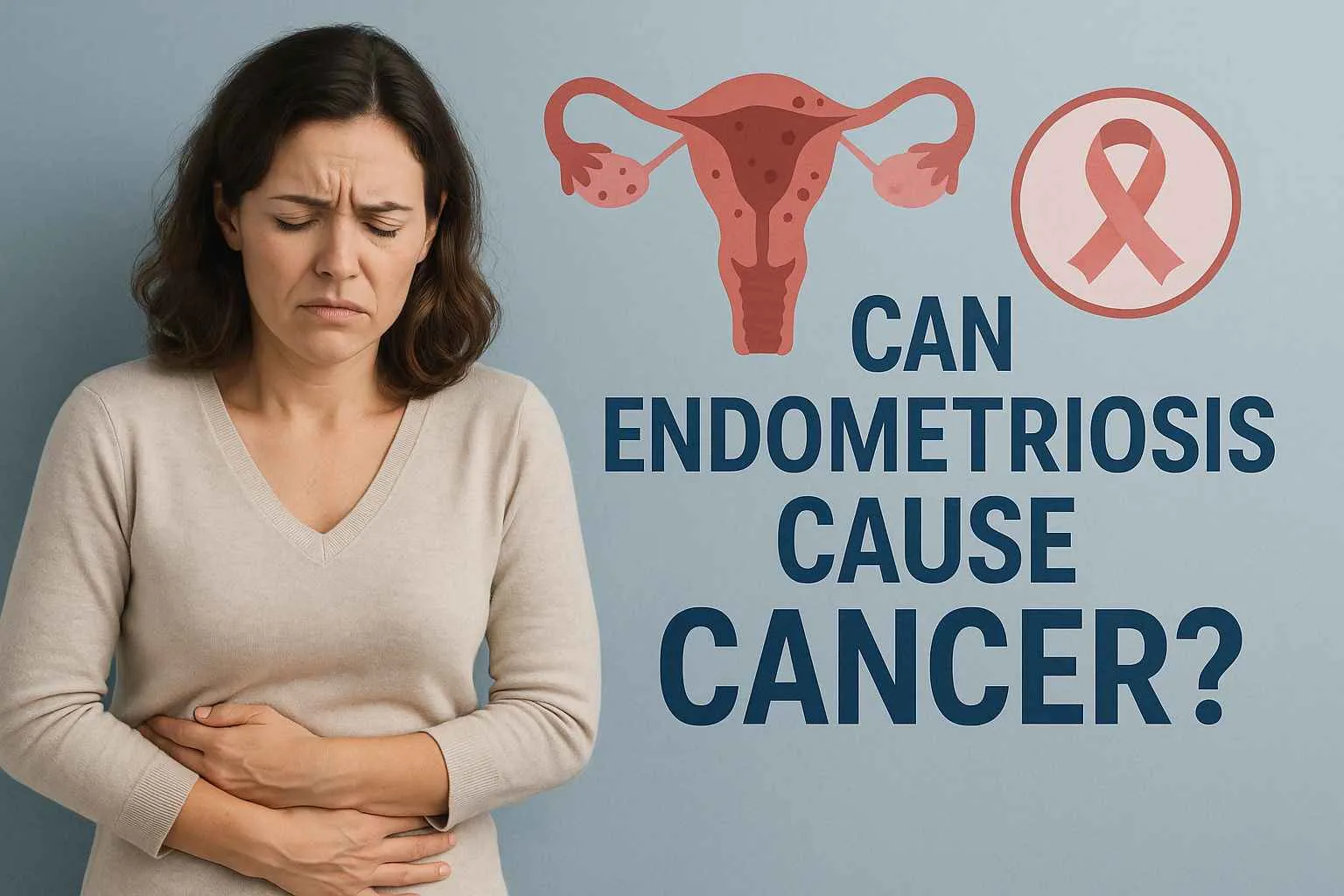Low-sodium cancer symptoms often go unnoticed, as they can mimic common side effects of cancer or its treatments. Fatigue, muscle weakness, confusion, and cramps may not just be part of the illness itself but could signal hyponatremia—a condition where certain cancers, such as lung or brain tumors, disrupt the body’s sodium balance. Left unchecked, this hidden complication can lead to serious health risks.
In this article, we’ll break down what hyponatremia is, why it happens in cancer, the key symptoms to watch for, and how it can be managed or prevented. Understanding these signs early can make a crucial difference in treatment outcomes and overall quality of life. Read on to learn more.
Is Low Sodium a Cancer Symptom?
Yes, low sodium levels, also called hyponatremia (below 135 mEq/L), can indicate the risk of certain types of cancer. The primary mechanism via which the cancer leads to reduced sodium levels is the Syndrome of Inappropriate Antidiuretic Hormone (SIADH). In SIADH, the cancerous cells release antidiuretic hormone (ADH) in excess quantity, which causes the kidneys to retain water, resulting in dilution of sodium in the blood.
You may feel overwhelmed knowing that certain types of cancer can impact sodium levels. But understanding what symptoms it leads to and why it occurs can help you control your overall health through proper diagnosis and treatment.
Potential Low Sodium Cancer Symptoms
The severity of hyponatremia symptoms depends on how quickly sodium levels drop:
| Sodium Level (mEq/L) | Symptoms |
| 130-135 (Mild) | Fatigue, headaches, nausea |
| 125-129 (Moderate) | Confusion, muscle cramps, loss of appetite |
| < 125 (Severe) | Seizures, coma, brain swelling |
In mild hyponatremia cases, symptoms may not develop. However, if sodium levels in the blood are too low and lower very quickly, an individual may experience these cancer-associated hyponatremia symptoms:
Mild to Moderate Symptoms:
Fatigue and weakness: Low sodium levels affect muscle function and electrolyte imbalance, leading to fatigue and weakness.
Headaches: Low sodium levels cause water to move to brain cells, which leads to swelling, thus causing headaches.
Nausea and vomiting: By retaining excessive water, the body dilutes sodium levels, which causes nausea and vomiting.
Confusion: Research states that cancers like small cell lung cancer (SCLC) can lead to SIADH (Syndrome of Inappropriate Antidiuretic Hormone Secretion), where they produce ADH in excessive amounts. This causes the kidney to retain water, contributing to low sodium levels with symptoms like confusion.
Muscle cramps or spasms: Low sodium balance can interrupt the activity of nerve impulses that trigger contractions and cause muscle cramps or spasms.
Loss of appetite: Low sodium levels due to cancer can impact the brain and other organs, leading to weakness, fatigue, and confusion, which contribute to loss of appetite. Sometimes, cancer can directly impact appetite.
Severe Symptoms (If Sodium Levels Lower Significantly):
Severe confusion or delirium: SIADH due to cancer or some cancer treatments like chemotherapy can lead to severe confusion or sudden changes in mental state, like hallucinations.
Seizures: Due to SIADH, the body holds on to excess water, which dilutes the sodium levels, leading to swelling of the brain and potentially seizures.
Coma (in extreme cases): When sodium levels drop too much and too fast, it can cause brain dysfunction and swelling as the brain is highly sensitive to sodium imbalance. This contributes to coma.
Decreased consciousness: Swelling of brain cells due to low sodium levels can lead to neurological symptoms like decreased consciousness.
Note: If you suspect any symptoms, see a doctor immediately for proper medical intervention.
Types of Cancer Most Associated with Low Sodium Levels
Here are the types of cancers with a high risk of hyponatremia or low sodium levels:
1. Small Cell Lung Cancer (SCLC)
The most common type, affecting approximately 15% of individuals and often causes SIADH, leading to diluted sodium levels and water retention.
Symptoms include difficulty breathing, quick weight loss, coughing, seizures, and confusion.
2. Head and Neck Cancers
Tumors in the neck and head can also trigger SIADH.
Chemotherapy and radiation therapy can further affect the sodium balance.
3. Leukemia and Lymphoma
Some types of blood cancers can disrupt the fluid and electrolyte balance of the body.
Certain chemotherapy medications can also lead to low sodium levels.
4. Kidney and Bladder Cancers
Both organs are responsible for regulating fluid and electrolyte balance.
Tumors or different cancer treatments may affect kidney function, which can cause sodium imbalances.
5. Prostate Cancer
Another type of cancer (most commonly in men) that can be related to SIADH, particularly in advanced stages.
Symptoms include trouble urinating, electrolyte imbalances, and pelvic discomfort.
6. Breast (less commonly)
Not strongly associated with low sodium levels.
But this cancer type can still lead to hyponatremia because of the hormonal changes and side effects of the treatment.
7. Gastrointestinal (GI) Cancers:
Includes cancers of the stomach and colon, leading to symptoms, as electrolyte imbalance, abdominal pain, and changes in bowel habits.
During the treatment, poor nutrition, diarrhea, and vomiting can contribute to sodium loss.
Why Do Cancer Patients Develop Low Sodium Levels?
Cancer and its treatments can disrupt sodium balance in several ways:
SIADH (Syndrome of Inappropriate Antidiuretic Hormone Secretion): Cancer-induced hyponatremia can be caused by SIADH (frequently develops in small-cell lung cancer), which triggers too much release of ADH (Antidiuretic Hormone), retaining water and diluting sodium levels.
Cancer Treatments: Radiation therapy, chemotherapy, and other cancer treatments can impact kidney function or increase fluid retention, interrupting sodium balance.
Tumor-Related Effects: Certain tumors may interfere with the normal balance and stability of the hormone in the body, leading to a sodium imbalance.
Gastrointestinal Problems: Diarrhea, malabsorption, or vomiting due to cancer or its treatment can also contribute to excess sodium loss.
Kidney or liver Dysfunction: Cancers impacting the kidneys or liver can lead to an overload of fluid, which causes low sodium levels.
Excessive Fluid Intake: Cancer patients might consume plenty of water because of medication side effects or dry mouth, which can further lead to diluted sodium levels.
Who is At High Risk for Hyponatremia?
These factors increase the chances of hyponatremia:
older age
use of a diuretic, like thiazide diuretics
use of antidepressants, like SNRIs (Serotonin-Norepinephrine Reuptake Inhibitors) and SSRIs (Selective Serotonin Reuptake Inhibitors)
being a high-performance athlete, like a marathon runner
living in a warmer climate
a low-sodium diet
Other conditions, such as diabetes, high blood pressure, syndrome of inappropriate antidiuretic hormone, kidney disease, heart failure, and certain cancers or psychiatric disorders
Pain medicines, like nonsteroidal anti-inflammatory drugs (NSAIDs) and anti-seizure medications, such as Carbamazepine.
Complications of Untreated Hyponatremia
Hyponatremia or low sodium levels that develop gradually or decrease mildly are not likely to pose any complications if treated on time. However, in sudden drop in sodium levels (in less than 48 hours) or in case of too low sodium levels, there is the risk of severe issues if left untreated. Those complications include:
rhabdomyolysis (fatal muscle breakdown)
changed mental status (severe confusion)
coma
seizures
death
Long-term Consequences of Hyponatraemia
Here are the long-term consequences of low sodium levels, if left untreated
Cognitive impairment, like cognitive dysfunction and attention deficits.
Gait and balance problems, such as the risk of fractures and falls.
Osteoporosis risk due to high bone resorption.
Hallucinations, decreased consciousness, and coma.
High risk of all-cause mortality.
Increased hospitalizations and even higher chances of rehospitalization.
Osmotic demyelination syndrome, a fatal brain injury.
When to Call a Doctor for Low Sodium Symptoms?
See a healthcare provider immediately if you or your loved ones with cancer experience these symptoms of low sodium levels:
Severe confusion
Severe fatigue
Seizures
Doctors can help with blood tests to determine sodium levels and provide correct treatment.
Diagnosis and Testing
To rule out whether the cancer patient has reduced sodium levels, the healthcare professionals perform the following diagnostic tests:
Blood Tests: To check the levels of sodium in the blood and examine kidney function.
Urine Tests: To evaluate the status of fluid and sodium excretion.
Imaging Tests (e.g., CT scans or X-rays): To detect tumors that might be contributing to SIADH.
Endoscopy: To detect gastrointestinal cancers through direct visualization of internal organs and to take a tissue sample (called a biopsy) to confirm cancer.
How Is Hyponatremia Treated in Cancer Patients?
Doctors treat low sodium levels based on severity:
Fluid Restriction: Limit intake of fluids like water, coffee, tea, or soup to alleviate the risk of further dilution of sodium levels.
IV Sodium Solutions: Intravenous saline or hypertonic saline in severe cases may be provided to slowly restore lost sodium levels.
Medications: Vaptans (e.g., Tolvaptan, Demeclocycline, or Conivaptan): Block excessive ADH release and restore sodium levels, and Diuretics remove too much water while maintaining the balance of sodium in the body.
Treating Underlying Causes: Address specific conditions like cancer, SIADH, or kidney dysfunction that are causing low sodium levels.
Adjusting Cancer Treatment: If chemotherapy or other cancer medications are causing low sodium levels in the blood, doctors may adjust the treatment plan.
Hospitalization: In severe cases where symptoms such as coma, seizures, or confusion occur, doctors may ask for immediate hospitalization for close monitoring.
How Low Sodium Impacts Cancer Recovery?
Persistent low sodium levels can complicate the treatment of cancer in the following manner:
Interrupts or Delays Cancer Treatment:
Severe sodium imbalance may make the healthcare providers delay or change chemotherapy cycles or other cancer treatment until the levels become stabilized. This slows overall recovery.
Impairs Brain Function:
Low sodium levels can cause fatigue, difficulty concentrating, confusion, and headaches. All these issues can affect the ability of the cancer patients to properly follow their treatment plan.
Increases Hospitalization Risk:
People with reduced sodium levels are more likely to experience complications that need hospitalization. This, in turn, can prolong recovery timing.
Weakens the Body’s Balance & Strength:
Hyponatremia can lead to muscle cramps, dizziness, and weakness, which can make physical activity and rehabilitation more challenging. This reduces quality of life.
Strains Major Body Organs:
In severe cases, low levels of sodium can impact the kidneys, nervous system, and heart, which stress the body, which is already weakened due to cancer.
Reduces Treatment Tolerance:
Low sodium levels can make a person feel the side effects from chemotherapy or medication worse. This can cause nausea, fatigue, and dehydration.
Increases Mortality Risk:
Persistent hyponatremia can contribute to lower survival rates, especially in the advanced stage of cancer, like in small-cell lung cancer.
Tips to Prevent Low Sodium Levels in Cancer Patients
Follow these tips to prevent the lowering of sodium levels in the blood:
Drink water (but not excessively): Drink water in moderate amounts as excessive hydration can worsen hyponatremia.
Monitor your medications: Certain cancer medications can lead to sodium imbalances, causing some side effects. So speak with your doctor about them.
Monitor electrolytes regularly: Go for frequent blood tests to keep track of your sodium levels and modify the treatment as required.
Change your diet: Increase your sodium (salt) intake by consuming sodium-rich foods (under a doctor's supervision) to regulate your sodium levels.
Treat associated conditions: Get the proper treatment for conditions that contribute to low sodium levels, for instance, certain cancers and their treatment or SIADH.
Watch for the symptoms: If you have medical issues like cancer that can raise the possibility of low sodium levels, be aware of the symptoms of low blood sodium.
Living with Hyponatremia During Cancer Treatment
Here are the practical management tips you can follow:
Daily Monitoring:
Note down new symptoms in your diary
Monitor the changes in your body weight
Note down fluid intake and output
Record your energy levels
Safety Considerations:
Avoid driving vehicles or heavy machinery if you experience confusion
Take help from others for everyday activities if you experience severe symptoms
Always keep emergency contacts available
Maintain regular appointments with your doctor
Nutritional Support:
Work with a certified dietician or nutritionist to maintain proper nutrition.
This helps manage normal sodium levels, improving treatment outcomes and quality of life.
Does Balancing Sodium Levels Improve Cancer Survival?
Yes! A study found that early sodium correction in small-cell lung cancer (SCLC) patients significantly improves treatment outcomes and survival rates. By maintaining a stable sodium balance, cancer patients can experience:
- Better treatment response
- Improved cognitive function
- Reduced hospitalization risk
- Enhanced quality of life
Prognosis & Long-Term Outlook
The impact of hyponatremia or low sodium levels on cancer prognosis can vary:
Mild and easily managed low sodium levels may have a low impact.
Severe or chronic hyponatremia can impact cancer treatment tolerance.
Moreover, severe and prolonged hyponatremia can reduce quality of life by causing nausea, fatigue, and confusion.
Severe hyponatremia can also cause brain swelling and contribute to coma or even death if not treated effectively and on time.
The proper management can lead to adherence to treatment and improvement in symptoms.
Real-life Cases
Understanding the impact of low sodium levels in real lives can help you know the significance of early diagnosis and treatment:
Case 1: 70‑Year‑Old Man with Colon Cancer
The 70‑year‑old man was treated with capecitabine + oxaliplatin and bevacizumab for colon cancer.
On day 7 of the cancer treatment, he experienced serious hyponatremia (serum sodium levels ~108 mmol/L) with symptoms, such as nausea and ileus.
The lab tests indicate SIADH, which was managed with fluid restriction and 3% saline infusion.
Case 2: 45‑Year‑Old Man with Small‑Cell Lung Cancer
A 45‑year‑old male with advanced small‑cell lung cancer developed severe hyponatremia because of SIADH, which was challenging to maintain with fluid and diet restriction.
Tolvaptan treatment was started, which helps correct sodium, improve quality of life, provide relief from severe diet and fluid restrictions, and facilitate earlier discharge.
Case 3: 68‑Year‑Old Male with Small‑Cell Lung Cancer and Pituitary Metastasis
A 68‑year‑old man with small-cell lung cancer and pituitary metastasis was admitted to the hospital with fever and cough. It was initially thought to be symptoms of pneumonia.
After lab tests, the levels of serum sodium were shown to be ~113 mmol/L. The tests also show the hormonal deficiencies, imaging studies reveal a mass in the hypothalamic & pituitary regions, and a chest CT scan shows a lung mass later. These findings confirm a small-cell lung cancer.
Hyponatremia was due to several causes, like SIADH, secondary hypothyroidism, and secondary adrenal insufficiency that develops from pituitary metastasis.
Final Thoughts
Recognizing the low sodium cancer symptoms, from nausea, vomiting, fatigue, weakness, and muscle cramps to severe confusion, seizures, and coma, is important for early diagnosis and treatment.
Regular sodium monitoring, proper hydration, and timely medical intervention can prevent complications and improve patient outcomes. If you or a loved one is undergoing cancer treatment, speak to your doctor about monitoring sodium levels to ensure a safer and more effective recovery journey.
If a cancer patient experiences severe confusion, seizures, or unconsciousness, seeking urgent medical care is essential.
If you want to learn more, consult your healthcare provider or check out reputable sources like the American Cancer Society for further insights.
Disclaimer: This information is only intended for educational purposes and shouldn't replace medical advice. People experiencing cancer-related low sodium levels should always see a doctor immediately for proper diagnosis and treatment.
Read Also: What Causes Low Sodium Levels In The Elderly
अक्सर पूछे जाने वाले प्रश्नों
What cancer causes low sodium levels?
Cancer like small cell lung cancer (SCLC) more frequently causes low sodium levels. Other cancers may include non-small cell lung cancer, head and neck cancer, breast cancer, and colorectal cancer.
What drink is good for low sodium?
Drinks like electrolyte solutions, coconut water, and sports drinks are best to increase sodium levels.
How long does it take to correct low sodium?
It may take 24 hours to some days to correct low sodium levels which can vary depending on the cause or severity of sodium imbalance.
What is the relationship between non-small cell lung cancer and hyponatremia?
Hyponatremia is an electrolyte disorder in cancer patients which is a negative prognostic factor for non-small cell lung cancer, which is associated with increased mortality ((destined to die) and poor clinical results.
Can all types of cancer cause low sodium levels?
No, not all. Low sodium levels are particularly associated with prostate cancer, pancreatic cancer, small-cell lung cancer, and gastrointestinal cancers.
Can low sodium levels impact cancer treatment outcomes?
Yes, severe hyponatremia can affect cancer treatment, contributing to poor health conditions and affecting the treatment's effectiveness and the individual's recovery.
लेखक






